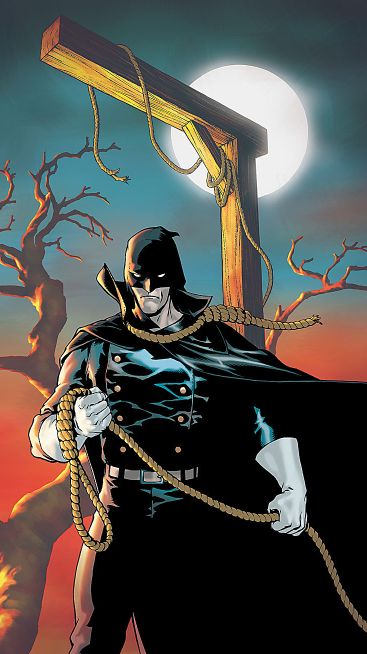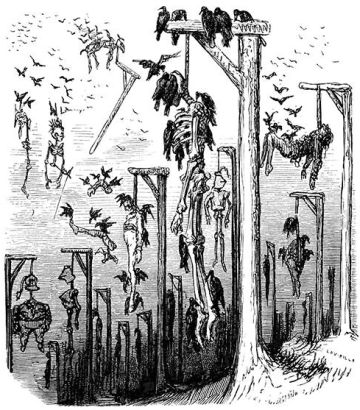“Oyez! Oyez! Oyez!”

Galgenbaum is ruled by five Mayor-Justices, each one serving for life and holding jurisdiction over part of the town, and all five meeting to decide matters that affect more than a single jurisdiction or the entire town. When a Mayor-Justice dies in office or is no longer able to perform his or her duties due to ill health, a new Mayor-Justice is carefully chosen from the Rechtsanwälte, the guild of lawyers. The selectee must be approved by the unanimous consent of the Mayor-Justices. Each Mayor-Justice possesses a magical gavel and sounding board. When a Mayor-Justice takes the oaths of office, the other Mayor-Justices invest the new justice with the gavel and sounding board. This ceremonial process links the Mayor-Justice with the gavel and sounding board. Their powers function only for the Mayor-Justice to whom they have been entrusted.
When a Mayor-Justices strikes the sounding board with the gavel, the magic takes effect on all who hear the gavel’s raps. Mayor-Justices are immune to these effects, which vary depending on the number of raps of the gavel. A Mayor-Justice may choose to exempt certain persons present from the effects. Typically this courtesy is limited to the bailiffs present in the court.
One Rap: All those affected are subjected to a Hold Person effect. After one minute, a saving throw can be attempted to move normally.
Two Raps: Those affected must stand up and remain relatively motionless. After one round, a saving throw can be attempted in order to move normally.
Three Raps: Those affected must sit down. After sitting down for one round, a saving throw can be attempted in order to stand and move about normally.
Should a gavel and its sounding board fall into unauthorized hands, the magical powers still function, but the user cannot exempt anyone from those effects. This includes the unauthorized user himself. Furthermore, the gavel and sounding board are invested to a particular Mayor-Justice, who becomes instantly aware of the items’ misuse. The Mayor-Justice even knows the general direction and distance to the gavel and sounding board. The closer the Mayor-Justice is to the items, the more precise is his or her knowledge of their location.



